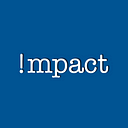The Power of Equity Crowdfunding: Building Momentum, Telling Your Story, and Creating a Community - Anna Gudmundson
Recently, I participated in a panel discussion organized by the KINN Venice, a membership network, accelerator, and collaborative workspace for conscious entrepreneurs based in Venice, California, where we explored the intricacies and benefits of equity crowdfunding. The conversation focused on the practicalities of this fundraising approach, which has become an increasingly popular way for businesses to raise capital. Drawing on my experience with equity crowdfunding, I shared some insights on how founders can make the most of this opportunity and avoid common pitfalls.
Equity crowdfunding has evolved tremendously over the years, becoming a legitimate and powerful way for businesses to raise capital. First and foremost, it’s essential to have a plan. When you launch a raise, you need to know exactly how much you want to raise, how long your campaign will last, and what resources you’re going to commit. Without a clear structure, your raise can quickly lose momentum, leading to what I call a “zombie raise” — a campaign that drags on without success.
In my experience, one of the key drivers of a successful raise is ad spend. As I mentioned during the panel, crowdfunding isn’t a “build it, and they will come” situation. You need to put fuel on the fire. Whether through targeted advertising or leveraging your personal and professional networks, it’s crucial to generate traction early on. That initial boost — whether it’s through advertising, your existing network, or your customer list — can create a snowball effect. People are more likely to invest when they see others have already committed, so starting strong is essential.
Another point we discussed is the importance of storytelling. You might have the best product or service, but if your story doesn’t resonate with potential investors, your raise will struggle. When I launched one of my earlier campaigns, we found that our initial creative didn’t hit the mark. We revamped our messaging, focusing on how our product wasn’t just another gadget but something that truly made a difference in people’s lives. This shift helped us “bring sexy back” to an industry not typically seen as glamorous.
A key takeaway from my own crowdfunding journey is the importance of building a community. Crowdfunding isn’t just about raising money — it’s about creating a loyal group of supporters who believe in your vision. In my case, I found that many of the people who invested in my campaigns were not only interested in financial returns but also in becoming advocates for my product. This is particularly true when your product is something that addresses a common problem, like the stress and anxiety relief product we’ve developed. Even if someone doesn’t invest, they might know someone who could benefit from your product, making your campaign a powerful marketing tool.
In summary, the success of an equity crowdfunding campaign depends on a well-executed plan, early momentum, compelling storytelling, and a strong community. These elements have been integral to my own campaigns, and I hope they help other founders achieve the same.
Best practices for crowdfunding:
Anna Gudmundson is a senior tech business leader with a passion for exponential technology and AI. She excels at driving growth and creating new revenue streams, while strategically guiding companies to innovate through a blend of cutting-edge science, design, and user-centric care. With a 360-degree understanding of tech businesses, she is known for finding unique solutions in complex environments and identifying future opportunities.
Connect with Anna on LinkedIn.
